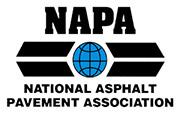History of Pavement Marking
History of Pavement Marking
 You might think that the history of pavement marking began as soon as paved roads were invented, but it was actually the introduction of the automobile that brought about the need to improve road safety. Before the automobile, America’s rural roads were typically little more than dusty trails. Despite the condition of these roads, however, head-on collisions between horse-drawn buggies were extremely rare. The accident rate stayed low until 1910 or so when the number of trucks and cars on American roads soared.
You might think that the history of pavement marking began as soon as paved roads were invented, but it was actually the introduction of the automobile that brought about the need to improve road safety. Before the automobile, America’s rural roads were typically little more than dusty trails. Despite the condition of these roads, however, head-on collisions between horse-drawn buggies were extremely rare. The accident rate stayed low until 1910 or so when the number of trucks and cars on American roads soared.
History of Pavement Marking -Early American
Although no one can be certain of when and where the first pavement was marked, the first documented instance occurred in Michigan sometime during 1911. It was a simple center stripe painted along an unusually dangerous stretch of road in Wayne County. The idea soon spread throughout the state.
In 1917, California and Oregon began painting center stripes on their state highways. They did not always fund parking lot striping and pavement markings on roads built and maintained by municipalities or counties, however. Frustrated with the local government’s inaction, more than one private citizen provided the labor and materials to stripe hazardous locations.
With so many different groups marking pavements, it was inevitable that variances would occur. Everyone seemed to have a different idea of what the color, size and meaning of the pavement markings should be. Despite the confusion, however, pavement markings did help to reduce the number of accidents, and drivers managed to cope with the variety for several decades.
Uniform Standards for Pavement Markings
The federal government attempted to issue guidelines for pavement markings during the 1950s, but these guidelines were often ignored for the next 20 years. By 1971, American drivers were ready to embrace uniform pavement markings, and the Federal Highway Administration published a manual for standardizing the system.
Improvements in Pavement Paints
The paints chosen for the first pavement markings were not always kind to the environment. Solvent- and lead-based paints were common until the dawn of the 21st century, and solvent-based paints are still in use in certain locations.
Thermoplastic markings are applied in a manner that is similar to regular paint. However, thermoplastics must be heated before application, and a different type of striping machine is needed. Depending on the climate, snowplow use and traffic, thermoplastic markings can last for six or seven years without losing their reflective properties or vivid colors.
When temporary pavement markings are needed or the area receives very little traffic, professionals often choose water-based pavement paints. These paints can last for as long as 48 months, but 24 months is a more typical life.
Contact Dirtworks for Your Pavement Markings
Dirtworks provides an extensive range of construction-related services to customers in the Cape Cod area. Our services include parking lot striping, pavement markings, sealcoating, asphalt milling, paving and asphalt repair. We also offer site work, excavation services and snow removal. We have more than 20 years of experience, are locally owned and pride ourselves on the quality of the work that we do. You can request a free quote by calling (508) 240-5541 or completing the online form.
See recent work below –
https://www.dirtworkscapecod.com/portfolio/paving-cape-cod-cooperative-bank/






